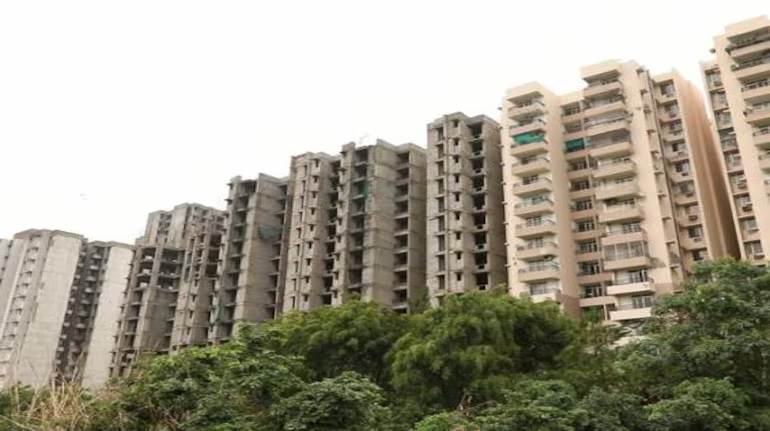Top Stories
2018 to see residential recovery; hopes on Budget to uplift sector


Rajeev Talwar, Chairman, Naredco
The year 2017 was an eventful year for the country in which path-breaking reforms were introduced by the Government. RERA was implemented in May to regulate the real estate sector which was largely unorganised. This was a welcome step since the law would bring credibility to the sector which has been suffering from a trust deficit for some years. The regulator will help the sector increase financial discipline and transparency and empower property buyers by helping them take informed decisions.
In early 2017, affordable housing projects were granted ‘infrastructure status’ providing access to lower financing costs and funds for re-investment. This will boost interest from institutional investors.
There was an increase in FDI by 17 per cent over the last year to $25,354 million ($21,624 million 2016-17) for the period April to September 2017. According to the last DIPP Report of September, 2017, the construction development sector, which includes townships, housing, built-up infrastructure, was among the top four sectors that attracted highest FDI equity Inflow. This happened post- RERA and reflects the confidence in the sector and the India story.
The introduction of the Goods and Services Tax (GST) in July was the biggest indirect tax reform. It has united the country into a single market with a common tax structure. The new indirect tax system is good for the country and even transporters of goods have gained a 50 per cent increase in their daily mileage.
Besides RERA and GST, the Government introduced 37 reforms in areas such as Insolvency Resolution, protecting the interest of minority shareholders, simplifying the process of taxes, e–returns, their acceptance and e-refunds have further provided ‘ease of doing business’.
India was acknowledged by the World Bank among the top five reformers. It improved its score in six out of the ten criteria used. As a result, India ranked 100th out of the 190 countries that were covered, which was a jump of 30 places over the last year, which itself is an unprecedented achievement.
The primary markets were the top sources for funds in 2017, according to Prime Database. Twenty Eight companies raised a total of Rs 1.39 trillion from the primary market, some of the money will be used in making new infrastructure and generate employment.
As far as the real estate sector is concerned, 2017 was a year of consolidation and completion. Subdued demand in the residential segment continues due to a pile-up of over-supply for the last decade, when all developers pursued only residential projects, following the over-supply of commercial and retail projects between 2004 and 2007.
The residential sector is witnessing renewed green shoots and interest from consumers for ready-to-move-in homes. While there is a large inventory in the country, a major portion of it still remains uncompleted and is work-in-progress.
Demand for offices in key markets and segments remained uptick and there was a steady rise in rentals for areas which enjoy locational advantage in markets like Mumbai, Bengaluru, Gurugram, Chennai, Hyderabad and Pune.
The retail sector was buoyant, with rentals remaining steady. Large format malls and destination malls did well.
- The regulator will help the sector increase financial discipline and transparency and empower property buyers by helping them take informed decisions.
- As far as the real estate sector is concerned, 2017 was a year of consolidation and completion.
- We hope that the Union Budget brings cheer to the middle class and the real estate sector since housing, construction and real estate are major economic drivers and sources of mass employment.
- There will be continued buoyancy and demand for good commercial assets across key markets of Bengaluru, Gurugram, Chennai, Hyderabad, Pune and Mumbai.
- The yea 2018 should be a year of recovery for the residential sector. There will be restricted launches which will gradually help in liquidating unsold inventory.
- Retailers will face challenges by the constantly-changing tenant mixes and lack of investment by landlords in retailing facilities.
- The Budget should remove the condition of allowing only one house to be purchased from the sale proceeds of another older house. This was an artificial restriction which unnecessarily reduces the demand for more homes to be constructed.
What to look forward to in 2018
We hope that the Union Budget brings cheer to the middle class and the real estate sector since housing, construction and real estate are major economic drivers and sources of mass employment. An impetus could be a rate-cut by the RBI in its next credit policy meeting. It is equally our sanguine hope that the banking sector passes this benefit to consumers.
The Government has already increased its allocation under the Pradhan Mantri Awas Yojana scheme. This will encourage homebuyers to invest and will also bring in participation from the private sector.
Companies/developers that were struggling with projects that were nearing completion will be more serious about deliveries. The courts and the Government have made it clear that interest of homebuyers should be primary and need to be protected.
Commercial sector
There will be continued buoyancy and demand for good commercial assets across key markets of Bengaluru, Gurugram, Chennai, Hyderabad, Pune and Mumbai. Rentals should steadily rise further as we see demand emerging from start-ups and non-IT service companies.
With e-commerce companies setting up infrastructure/logistic hubs near Tier-I and II cities, some developers who have large land holdings may see synergy and partner such companies.
REITs have begun a serious journey through valuations and bench-marking processes while a private sector REIT is nearing cash inflow.
Residential sector
The yea 2018 should be a year of recovery for the residential sector. There will be restricted launches which will gradually help in liquidating unsold inventory. The Government has to realise that cities/projects get populated over a medium span of time, say five years to a decade. Hence many completed Projects will require handholding from the Government rather than forcing them to do distress sales, which will erode the ability of the sector to withstand the decrease in prices by 25 to 30 per cent, which has already taken place in the last five years due to inflation. The Government needs to promote rental housing also which caters to 50 per cent of the housing occupancy even in developed countries.
We should witness renewed demand in the residential sector as the economy picks up and more jobs are added. Job stability will help fence-sitters take the plunge of buying their dream homes. We expect buyers to be cautious as they would prefer to buy ready-to- move-in apartments rather than under-construction apartments. The renewed interest should help markets all over India to liquidate inventory.
Retail sector
There are concerns about how the retail industry will withstand the challenge from ecommerce giants and neighbourhood markets/ mom–and–pop stores. We expect companies to work closely with brands to address such concerns.
The year will see completion of a number of malls. They will need time and financial strength to graduate to a ‘leased’ format for the sake of sustainable product segmentation and store planning. Retailers will face challenges by the constantly-changing tenant mixes and lack of investment by landlords in retailing facilities.
We expect organised retail to grow as shoppers look for complete shopping and entertainment experience under one roof. Malls that carve out a niche in terms of overall customer experience, tenancy and those that enjoy a good location will fare well.
We are moderate about our outlook on real estate Sector for 2018 for the first two quarters. We hope with improved liquidity and lower interest rates the sector will be attractive. Overall, 2018 should be a good year for the sector. PE funds and investors will be looking at this sector closely for attractive returns in the medium and long term.
The Budget could provide a definite upside to this sector. The industry’s view for the Budget would be:
i) Monitoring by the Prime Minister’s Office of affordable housing projects sanctioned and started in various States. This could also form the basis of a national “Housing Starts Index’’ which is a major economic indicator in all developed countries.
ii) The Government has recently allowed ‘Interest subvention’ at various rates for homes of up to 150 square metres carpet area. It would be prudent to give infrastructure status to homes up to 150 square metres carpet area, just as the Government had given infrastructure status for homes up to 60 square metres carpet area size last year. Such a measure would spur investment and resolve problems of the middle class, thereby giving a boost to this sector.
iii) The Budget should remove the condition (which was introduced only about five years ago) of allowing only one house to be purchased from the sale proceeds of another older house. This was an artificial restriction which unnecessarily reduces the demand for more homes to be constructed.
iv) The Budget should also help in tackling the issue of the oversupply of homes which is also known as unsold stock. Last year, the Budget introduced a condition allowing only one year after grant of completion certificate for liquidation of unsold stock. Buildings and real estate projects get occupied / populated over a period of 5–10 years. It would therefore be prudent to extend the period of one year to 3 years / 5 years for liquidation of unsold stock; or for the Government and public sector undertakings to purchase such stock at the last sold prices of 2017. The obvious advantage would be that this would be the easiest way to declare an already discovered market price; it would also make up for the shortage of Government/PSU housing; and lastly if the same homes were to be given to Government / PSU servants on payment of easy instalments then the Government/public sector undertaking would also not lose any funds spent in the purchase of unsold stock.
v) Lower mortgage rates had a salutary effect on boosting this sector twice. First in 2002-04, when rates had come down to as low as 6.5 per cent. And next in 2008-09, when the State Bank of India had lowered interest rates by 2 per cent in the first two years of any home loan.
-



 News4 weeks ago
News4 weeks agoKW Delhi 6 Mall Onboards New Brands
-



 News4 weeks ago
News4 weeks agoCommercial Realty Gets Tech Savvy: Fast Construction, Enhanced Convenience
-



 News3 weeks ago
News3 weeks agoGodrej Properties Sells Rs 3k cr+ Homes of Godrej Zenith, Gurugram, within 3 days
-



 News4 weeks ago
News4 weeks agoRBI’s Status Quo on Key Policy Rates to Help Maintain the Real Estate Growth Momentum, Say Industry Stalwarts
-



 News2 weeks ago
News2 weeks agoOlive Announces Dhruv Kalro as Co-Founder
-



 News2 weeks ago
News2 weeks agoNoida’s High-Rise Societies Face Multiple Challenges Despite Rapid Urban Growth
-



 News3 weeks ago
News3 weeks agoGodrej Properties Sells 5000+ Homes of Rs 9.5 cr in Q4FY24, Bookings up 84% YoY
-



 News2 weeks ago
News2 weeks agoVestian: Domestic Investors Dominate Institutional Investments in Jan-Mar’24



























